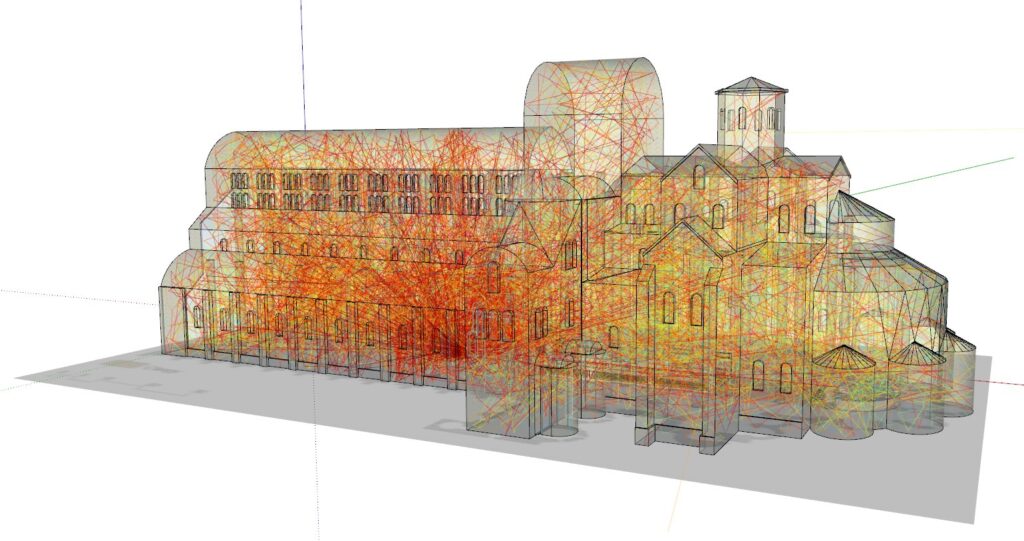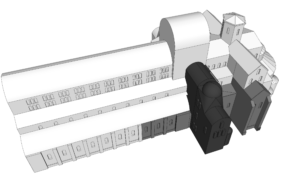
Ray tracing simulation in the acoustic 3D model of Cluny III (Image: Lukas Aspöck, CC-BY 4.0).
What was it like back in the Middle Ages? Experiencing history and feeling the spirit of the times – musicologist Professor Stefan Morent from the University of Tübingen, together with his project team and in cooperation with the Institute for Hearing Technology and Acoustics at RWTH Aachen University, is reconstructing the soundscape of this era. At the center of the music-historical experiment is the monastic church of Cluny III between 1130 and 1790.

3D model of Cluny III. Black and dark gray parts show the still existing remains of the church (Image: Lukas Aspöck, CC-BY 4.0)
The Benedictine Abbey of Cluny was one of the most influential religious centers in Europe until the destruction of significant parts of the imposing building. Clergymen practiced their faith in its rooms: “Only through music and if the liturgy was performed flawlessly could a connection to God be established,” Professor Morent explains the monks’ conviction. But how did their singing sound in the spacious and magnificent halls?

Ensemble Ordo Virtutum during the recording session in the anechoic half-room of the institute (Photo: Lukas Aspöck, CC-BY 4.0)
Cluny III is a virtual version of the historical original, which enables a room-acoustic computer simulation. For this purpose, medieval choral songs of the ensemble Ordo Virtutum were recorded in IHTA’s laboratory – an anechoic room without reverberation. In real time, the singers experienced the reflections of the virtually constructed church space via headphones. This auralization makes it possible to embed the musical compositions in the architectural-historical context of their creation. But what role does the interaction of architecture and sound play for future spatial concepts? To answer this question, the recordings will be analyzed from a musicological point of view in further project steps in order to investigate the influence of architecture on the musical performance.




Leave a Reply